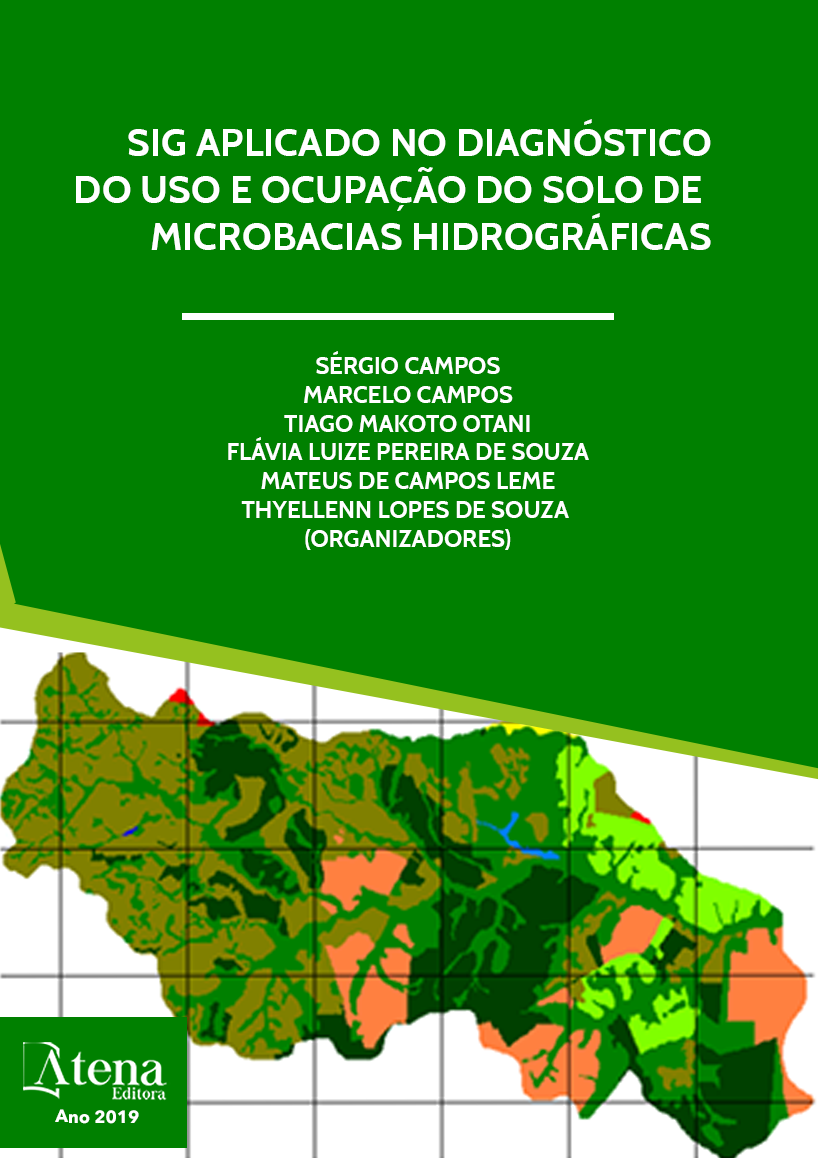
GEOPROCESSAMENTO APLICADO NA ESPACIALIZAÇAO DO USO DA TERRA DA MICROBACIA DO CÓRREGO MONTE BELO, BOTUCATU, SP
O trabalho visou discriminar, mapear
e quantificar as áreas de uso da terra da
microbacia do Córrego Monte Belo - Botucatu
(SP) obtidas pelo Sistema de Informações
Geográficas – Idrisi 32 em fotografias aéreas
coloridas provenientes das coberturas
aerofotogramétricas do Estado de São Paulo,
de 2000, com escala nominal aproximada de
1:30000. O estudo do uso da terra na microbacia
mostra que os reflorestamentos, as matas
ciliares e as pastagens foram as coberturas
vegetais que ocuparam maior parte da área,
representando mais de 93% (93,91%). Destes,
os reflorestamentos (40,46%) e as matas
ciliares (31,33%) representaram mais de 70%
da área (71,79%), ou seja, cobriam 1133,56ha,
mostrando com isso a predominância de solos
de baixa fertilidade (Barros,1990; Campos,
1993). As fotografias aéreas coloridas
permitiram o mapeamento do uso da terra de
maneira confiável, que servirão de dados para
futuros planejamentos na região, bem como
vem sendo conservada ambientalmente, pois
não há deficiência de florestamento, visto que
se apresenta coberta mais de 20% de mata
(matas ciliares), sendo que o mínimo exigido
pelo Código Florestal Brasileiro vigente é de
20%.O alto índice de ocupação do solo por
reflorestamento e pastagem na bacia, reflete
a predominância da silvicultura e pecuária
regional.
GEOPROCESSAMENTO APLICADO NA ESPACIALIZAÇAO DO USO DA TERRA DA MICROBACIA DO CÓRREGO MONTE BELO, BOTUCATU, SP
-
DOI: 10.22533/at.ed.9631919117
-
Palavras-chave: Geoprocessamento, sensoriamento remoto, SIG – Idrisi, Imagens aéreas.
-
Keywords: Geoprocessing, Remote Sensing, GIS - Idrisi, Aerial Imaging.
-
Abstract:
The work aimed to discriminate,
map and quantify the land use areas of the Monte
Belo Stream microbasin - Botucatu (SP) obtained
by the Geographic Information System - Idrisi
32 in color aerial photographs from the aerial
photography of the State of São Paulo, 2000.
, with approximate nominal scale of 1: 30000.
The study of land use in the watershed shows
that reforestation, riparian forests and pastures
were the vegetation cover that occupied most
of the area, representing over 93% (93.91%).
Of these, reforestation (40.46%) and riparian
forests (31.33%) represented more than 70%
of the area (71.79%), that is, they covered
1133.56ha, thus showing the predominance of
soils. low fertility (Barros, 1990; Campos, 1993).
The color aerial photographs have allowed
reliable land use mapping, which will serve as
data for future planning in the region, as well
as being environmentally conserved, as there
Capítulo 7 35
is no forest deficiency, as it is covered by over 20% of forest. (riparian forests), and
the minimum required by the current Brazilian Forest Code is 20%. The high rate of
land occupation by reforestation and pasture in the basin reflects the predominance of
forestry and regional livestock.
-
Número de páginas: 15
- Mariana Garcia Da Silva
- Sérgio Campos
- Leslie Ivana Serino Castro
- Ana Paula Barbosa
- Mariana Lisboa Pessoa
- Bruno


